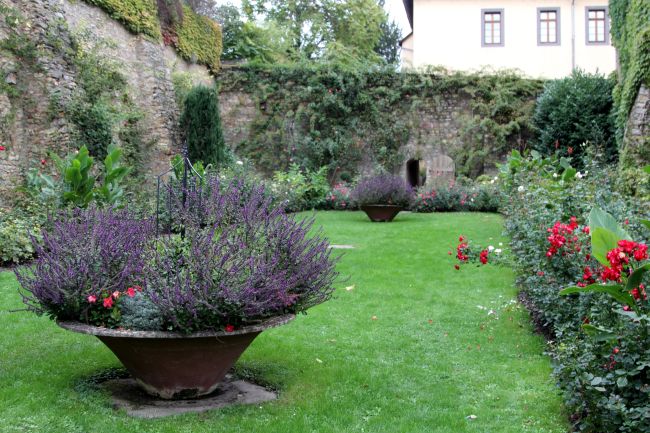Low-Maintenance Outdoor Solutions for Remote Workers

Remote work has reshaped how outdoor spaces get used. Many now look for yard solutions that give them comfort and save time on upkeep. Traditional lawns often make schedules busier than necessary for those working from home.
Artificial grass has become a practical solution for busy professionals seeking outdoor spaces that are easy to care for. Unlike natural lawns that demand regular mowing, watering, and fertilising, synthetic turf requires little upkeep while maintaining its appearance year-round. Homeowners who want convenience increasingly choose artificial grass for its reliability and consistently attractive green space.
Remote workers need outdoor spaces that stay presentable for video calls and offer peaceful areas for quick breaks. Artificial grass creates a consistent, neat background that looks tidy even when schedules get busy. Instead of disrupting the workday for last-minute mowing or weed removal, professionals can depend on artificial turf to maintain order.
Why Remote Workers Are Rethinking Traditional Lawns
Traditional lawns require ongoing attention. For remote workers, the demands of mowing, weeding, fertilising, and watering can interfere with professional tasks and relaxation. The time invested in maintenance often becomes an obstacle for those wanting a simple outdoor solution.
Water costs continue to rise across the UK, making traditional lawn care increasingly expensive. A typical lawn requires thousands of litres of water each year to maintain its appearance, especially during dry summer months. This financial concern has prompted many remote workers to seek alternatives.
The shift towards remote work has resulted in more professionals seeking outdoor spaces that support mental wellbeing but require minimal upkeep. This trend reflects a broader reconsideration of how time and resources are distributed.
Remote workers increasingly report that lawn maintenance brings unwelcome stress to workdays. The unpredictable nature of grass growth means maintenance tasks often arise at inconvenient times. Artificial grass provides a consistent solution that looks presentable at all times.
Smart Outdoor Space Solutions for the Digital Professional
Artificial grass stands out as a time-saving alternative for remote workers. Modern synthetic turf requires only occasional rinsing and brushing, removing the need for mowing, watering, and weed control. This reduction in maintenance allows professionals to reclaim hours every year.
Weather-resistant outdoor workstations fit well with low-maintenance surfaces. Remote workers can arrange dedicated outdoor office zones with waterproof furniture, shade features, and power access points. These setups allow professionals to work comfortably outdoors without worrying about garden appearance.
Balancing Productivity and Outdoor Living
Creating multi-functional zones helps remote workers get the most out of their outdoor spaces. Designating specific areas for work, relaxation, and exercise ensures each activity has its dedicated space. Proper ergonomic considerations for outdoor work areas support comfort during extended work sessions.
Year-round usability is essential in the UK climate. Selecting weather-resistant furniture, installing retractable awnings, and incorporating artificial grass creates an outdoor workspace that remains functional regardless of seasonal changes. This approach allows remote workers to enjoy fresh air and natural light throughout the year.
Integrating Smart Home Technology in Outdoor Workspaces
Connections with smart home systems bring added convenience to remote professionals. Automated lighting, heating, and weather-responsive shade solutions let workers adjust their outdoor spaces without stepping outside. When sudden rain threatens to interrupt work, automated systems can adjust canopies to keep the outdoor office functional.
Installing timers or remote controls for garden elements ensures the workspace always stays ready for calls and breaks, even with varied weather patterns. Chosen devices should prioritise user privacy, especially if paired with voice assistants or cameras for security.
Design Tips for Productive, Low-Maintenance Outdoor Offices
Professional efficiency in garden workspaces depends on thoughtful design choices. Combining artificial grass with drought-resistant native plantings creates an attractive yet practical setting. These plants require only minimal watering once established and can be selected for year-round greenery.
Workstations positioned under shaded pergolas or retractable awnings ensure comfort during video meetings and shield screens from glare. Choosing outdoor-rated extension sockets means laptops and tech devices remain charged safely. Locating seating and tables atop stable artificial turf prevents wobble.
The Technology Behind Modern Artificial Grass
Modern artificial grass has improved greatly over the last decade. Today’s products feature changes that address both realism and durability, meeting the expectations of remote workers who spend more time at home.
Several technical improvements make contemporary artificial grass suitable for demanding daily use. Research teams focus on creating turf with UV-resistant polymers, blended fibre structures, and reliable drainage systems. Specialist suppliers offer resources for comparing artificial grass options based on specific needs.
Material Innovations Driving Realism and Durability
Artificial grass now features fibres made from high-grade polymers, including polyethylene and polypropylene, designed for softness and longevity. Multiple fibre shapes and heights mimic the visual variation of natural grass, giving each blade a true-to-life appearance.
UV stabilisers infused into the fibres prevent fading and brittleness, so the turf retains its colour for years even under constant sunlight. The blend of soft C-shaped, S-shaped, and straight fibres helps the grass recover its shape after being walked on.
Environmental Considerations for Tech-Conscious Consumers
Water conservation represents a major benefit of artificial grass. This reduced water usage matches growing environmental awareness among remote workers who seek sustainable solutions for their homes.
The elimination of chemical fertilisers, pesticides, and herbicides further improves the environmental profile of artificial grass. Modern synthetic turf products also offer improved recyclability options, with manufacturers developing end-of-life solutions to address disposal concerns.
Cost-Benefit Analysis for the Remote Professional
The initial purchase and installation of artificial grass usually range from £60-£75 per square metre, presenting a sizable upfront cost compared to seeding or real turf. However, this calculation must include the long-term financial effects of equipment, water bills, and weed control products needed for traditional lawns.
Most remote professionals find the freedom from regular lawn maintenance creates more opportunity for focused work and relaxation. Artificial grass removes the repeated interruptions of traditional lawn care routines, helping remote workers preserve both time and peace of mind.
For anyone balancing professional commitments from home, outdoor upgrades also have potential to improve property value. Artificial grass provides an evergreen, low-maintenance surface that often appeals to buyers looking for functional outdoor areas needing little attention.
For remote workers, this improvement serves two purposes: it delivers immediate time-saving benefits and may strengthen future resale potential. Remote workers experience fewer workday interruptions, less anxiety about garden appearance for video calls, and increased access to usable outdoor space all year round.


